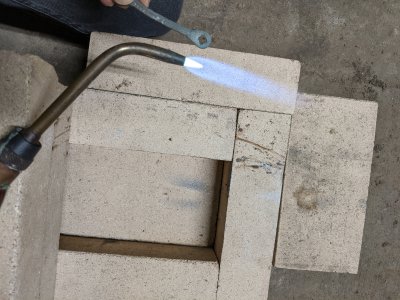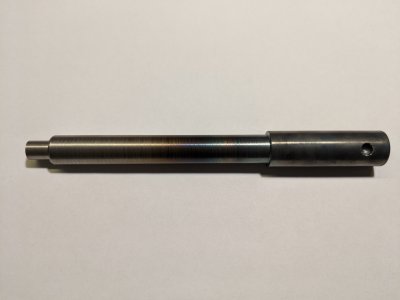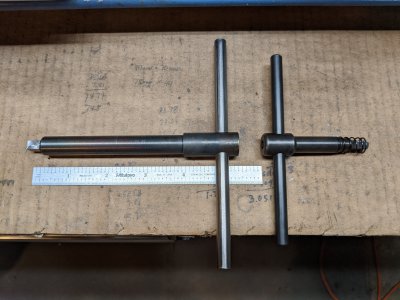- Joined
- Dec 18, 2019
- Messages
- 7,428
I'll take that as a general warning for people "watching along", rather than a personal admonishment. I've done numerous minor foolish things in my life, but I'm not a fool.Oxy, acet, and the HHO torch are NOT stored in the wooden structures. Nobody but a fool would put an Oxy/Acet rig in the basement, even with a concrete floor above.
I would never use oxy/acet in the basement. Way too many things can go wrong: from tipping the gas tanks, getting the tanks downstairs, to just plain fire hazard issues. I have full size tanks for my oxy rig. It's unwieldy. Using a plumbers torch, well that's different. I have a B-tank, which is transportable by hand. There is an 8 foot hose between the tank and the torch. Flame size is smaller, and less hot. Sure you can burn your house down, especially if you have to solder pipes inside a wall. Which I have had to do. (I watched and learned from a professional plumber.) You have to use common sense and take several precautions. Like using fire proof shields, having a water sprayer, and a fire extinguisher at hand. Normally, the plumbers torch is kept out of the house.
Using a plumbers acetylene torch in a non-confined space is fine, with a relatively small tip. Heating a chunk of steel that's sitting in a fire brick enclosure on a concrete floor is about as safe as you can be with fire. The cone of the flame was only 1/2" long and the rest of the flame was entirely inside the fire brick enclosure. The heating time was a whopping 4 minutes, no worry about using up all the oxygen. Fire precautions were taken. Life is risky, machining is certainly risky. So is fire. If one does the right things, you can minimize the risk and accomplish your goals.
Now, as for making things a different way - that's ok. It's why I am on this forum, to interact and learn new things. I thought about an insert. Generally, I don't like two piece units. My experience is that the pieces have an inexplicable desire to become unattached. Brazing an insert is a good idea. Thanks for mentioning it. (Have the torch!) If this current project goes further south, I may take that approach. I'll want to put in something a bit more sturdy than keystock. The keystock I have is kind of soft. Not sure if one can heat treat the keystock to toughen it, just haven't researched it yet.



